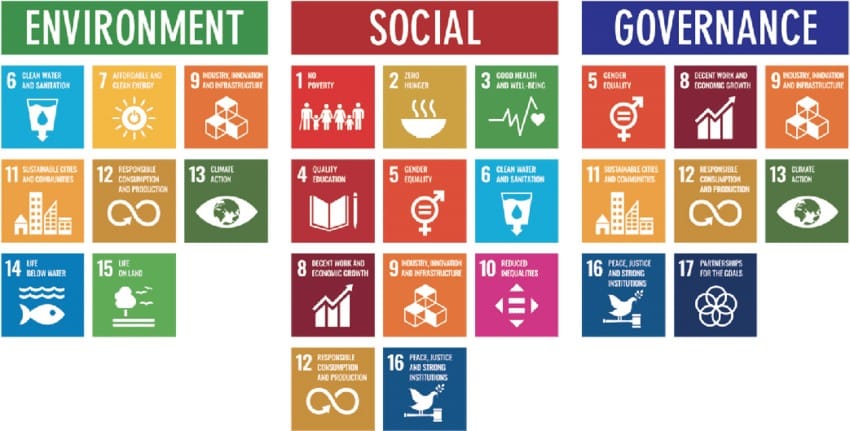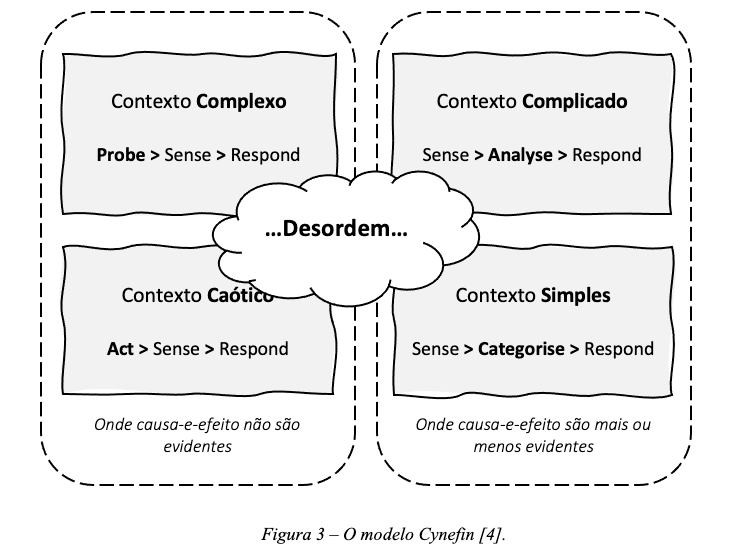AESE insight #87
[av_layerslider id='3441'] [av_layerslider id='3442'] [av_section min_height='' min_height_px='95px' padding='no-padding' shadow='no-border-styling' bottom_border='no-border-styling' bottom_border_diagonal_color='#333333' bottom_border_diagonal_direction='' bottom_border_style='' scroll_down='aviaTBscroll_down' custom_arrow_bg='#f37421' id='' color='main_color' custom_bg='#ffffff' src='' attachment='' attachment_size='' attach='scroll' position='top left' repeat='no-repeat' video='' video_ratio='16:9' overlay_opacity='0.5' overlay_color='' overlay_pattern='' overlay_custom_pattern='' av_element_hidden_in_editor='0'][/av_section] [av_one_full first min_height='' vertical_alignment='' space='' custom_margin='' margin='0px' padding='0px' border='' border_color='' radius='0px' background_color='' src='' background_position='top left' background_repeat='no-repeat' animation='' mobile_breaking='' mobile_display=''] [av_heading heading='La configuración institucional de las Empresas Familiares' tag='h1' style='blockquote modern-quote' size='48' subheading_active='subheading_above' subheading_size='12' padding='15' color='custom-color-heading' custom_font='' av-medium-font-size-title='' av-small-font-size-title='' av-mini-font-size-title='' av-medium-font-size='' av-small-font-size='' av-mini-font-size='' admin_preview_bg=''] AESE insight #87 > Thinking ahead [/av_heading] [/av_one_full] [av_section min_height='' min_height_px='500px' padding='default' shadow='no-shadow' bottom_border='no-border-styling' bottom_border_diagonal_color='#333333' bottom_border_diagonal_direction='scroll' bottom_border_style='scroll' scroll_down='' custom_arrow_bg='' id='' color='main_color' custom_bg='' src='' attach='scroll' position='top left' repeat='no-repeat' video='' video_ratio='16:9' video_mobile_disabled='' overlay_enable='' overlay_opacity='0.5' overlay_color='' overlay_pattern='' overlay_custom_pattern='' av-desktop-hide='' av-medium-hide='' av-small-hide='' av-mini-hide='' av_element_hidden_in_editor='0'] [av_one_fourth first min_height='' vertical_alignment='av-align-top' space='' margin='0px' margin_sync='true' padding='0px' padding_sync='true' border='5' border_color='' radius='0px' radius_sync='true' background_color='' src='' attachment='' attachment_size='' background_position='top left' background_repeat='no-repeat' animation='' mobile_breaking='' mobile_display=''] [av_image src='https://www.aese.pt/wp-content/uploads/2023/02/4.png' attachment='101334' attachment_size='full' align='center' styling='' hover='' link='post,5513' target='' caption='' font_size='' appearance='' overlay_opacity='0.4' overlay_color='#000000' overlay_text_color='#ffffff' animation='no-animation' admin_preview_bg=''][/av_image] [av_heading tag='h3' padding='10' heading='Carlos Folle' color='' style='blockquote modern-quote' custom_font='' size='' subheading_active='subheading_below' subheading_size='15' custom_class='' admin_preview_bg='' av-desktop-hide='' av-medium-hide='' av-small-hide='' av-mini-hide='' av-medium-font-size-title='' av-small-font-size-title='' av-mini-font-size-title='' av-medium-font-size='' av-small-font-size='' av-mini-font-size=''] Professor de Gestão de Negócios, Política e Gestão de Empresas pela Family Business IEEM, School of Business da Universidade de Montevidéu, Uruguai e da AESE Business School [/av_heading] [/av_one_fourth][av_two_third min_height='' vertical_alignment='av-align-top' space='' margin='0px' margin_sync='true' padding='0px' padding_sync='true' border='5' border_color='' radius='0px' radius_sync='true' background_color='' src='' attachment='' attachment_size='' background_position='top left' background_repeat='no-repeat' animation='' mobile_breaking='' mobile_display=''] [av_textblock size='' font_color='' color='' av-medium-font-size='' av-small-font-size='' av-mini-font-size='' admin_preview_bg=''] La configuración institucional es clave en cualquier empresa, pero en las empresas familiares tiene connotaciones particulares que deben ser atendidas con antelación de forma de lograr su continuidad. La permanencia en el tiempo de cualquier empresa de negocios se basa en su configuración institucional —término que acuñaron los profesores Antonio Valero y José Luis Lucas—, y esta tiene tres pilares esenciales: la iniciativa, el dinero y el poder.La iniciativa pasa por mantener la vigencia del negocio. Es decir, tener una misión clara para luego definir una estrategia y ejecutarla. En palabras de Michael Porter: “Alcanzar y sostener las ventajas competitivas que hacen que la empresa logre —y luego continúe manteniendo— su viabilidad en el mercado”. En una startup será la iniciativa emprendedora para desarrollar una idea de negocio, en una empresa ya consolidada será procurar el crecimiento y el intraemprendimiento y, en una empresa madura, será reinventarse. Sin esta “chispa” y vigilancia permanente nos quedamos sin empresa, ya que el mercado y la competencia juegan y los clientes cambian sus preferencias.
El dinero se refiere al modelo de negocios. O sea, cómo la empresa logra monetizar su actividad, cómo acompasar y controlar los flujos de ingresos y egresos para sostenerse y crecer de manera sostenible. Esto implica cuidar tanto la cuenta de resultados como el estado de origen y aplicación de fondos. También que los directivos de la empresa logren transmitir confianza a sus stakeholders y sean capaces de hacer efectiva su misión, alcanzar su visión de negocio y cumplir con sus promesas. Estamos hablando de credibilidad. Sin dinero es muy difícil hacer funcionar el giro de la empresa.
El poder se refiere al impacto de la configuración societaria, jurídica y de gobierno. Es decir, tener la autonomía para llevar a cabo las iniciativas. Sin poder no se puede dirigir la empresa con eficacia. El liderazgo con poder asociado es lo que permite que la estrategia se pueda elaborar e implementar. Para su buena aceptación requiere de capacidad de influir y motivar a las personas, unidad de mando y buena comunicación. Para mantener la vigencia en el tiempo hacen falta sistemas aceptados sobre las condiciones de acceso, y cuándo y cómo se traspasa ese poder.
Desafíos para las empresas familiares
Es frecuente observar dos conductas específicas en las empresas familiares que mantienen su vigencia en el mercado: velocidad en la toma de decisiones e identificación con la causa familiar. Entonces, ¿qué desafíos tienen las empresas familiares en estas tres dimensiones, a la luz de lo que las caracteriza?
Iniciativa. En las empresas familiares, el o los fundadores pueden haber comenzado la empresa con una iniciativa novedosa, incluso disruptiva para el momento en que se lanzó. La implementación y el aprendizaje en el tiempo la pueden haber pulido, permitiendo captar y fidelizar clientes con éxito. Sin embargo, las empresas tienen un ciclo vital. O sea que, si no procuramos “rejuvenecer” nuestras propuestas, la empresa envejecerá con nosotros. Los sectores, las industrias y los negocios cambian cuando cambian las expectativas de los clientes a los que se dirige la empresa. La frase tan conocida de que “a todos nos llega el Uber…” lo muestra con claridad. Si en la empresa familiar no se logra dar espacio para la entrada de nuevas iniciativas, o esto se dilata en el tiempo y se insiste con mantener la forma de hacer negocios del padre o del abuelo, la vigencia de la empresa se verá comprometida. Recordemos la ventaja de las empresas familiares a partir de la velocidad en la toma decisiones.
Dinero. En tiempos florecientes o de “vacas gordas” es frecuente ver que en las empresas familiares se toman discrecionalidades, por ejemplo, más días de licencia familiar, gastos de los familiares que se cargan a la empresa, etc. El problema surge cuando aparecen las épocas de “vacas flacas”, particularmente cuando hay varios integrantes de la familia que dependen de la empresa y su situación financiera personal es distinta. Recortar estas discrecionalidades o cambiar la política de dividendos puede ser motivo de grandes disputas y desmotivación, lo cual naturalmente afectará la segunda fuente de ventajas que mencionamos antes: el compromiso con la causa.
Poder. Es normal ver que el o los fundadores quieran que su proyecto los trascienda en el tiempo. La empresa “es un hijo más” para ellos. Sin embargo, implementar las transiciones generacionales a los distintos niveles (propiedad, dirección y gestión) suele ser un desafío importante. Muchas veces pasa una serie de interrogantes por la cabeza de quien tiene que traspasar el poder: si cuenta con uno o varios sucesores familiares, si están lo suficientemente preparados, si el proceso y los criterios para definir al adecuado están comunicados y compartidos, cuál será el momento de traspasar, si él o ella dice que quiere soltar, pero siente que aún está en plena posesión de sus facultades y por lo tanto la decisión se podría postergar un poco más, qué va a hacer si ya no es el verdadero jefe en la empresa, cuál será su lugar, mejor traer otros directivos no familiares… Estas y otras indecisiones pueden consumir el tiempo de quien detenta el poder y afectar las dos fuentes de ventajas competitivas: la velocidad en la toma de decisiones y el compromiso y motivación de las siguientes generaciones. Con el agravante de que si llega a faltar inesperadamente —y la sucesión no está clara— la empresa familiar podría transformarse en un centro de lucha de poder que complicará más las dos fuentes de ventajas competitivas.
En suma, la configuración institucional es clave en cualquier empresa, pero en las empresas familiares tiene connotaciones particulares que deben ser atendidas con antelación de forma de lograr la continuidad del legado del fundador en el tiempo. Y como habitualmente nos recordaba el profesor Luis Manuel Calleja: “La carencia grave de una de las tres componentes no se suple con abundancia de las otras dos”. Se necesitan las tres: iniciativa, dinero y poder. [/av_textblock] [/av_two_third] [/av_section] [av_section min_height='' min_height_px='500px' padding='default' shadow='no-shadow' bottom_border='no-border-styling' bottom_border_diagonal_color='#333333' bottom_border_diagonal_direction='scroll' bottom_border_style='scroll' scroll_down='' custom_arrow_bg='' id='' color='main_color' custom_bg='' src='' attach='scroll' position='top left' repeat='no-repeat' video='' video_ratio='16:9' video_mobile_disabled='' overlay_enable='' overlay_opacity='0.5' overlay_color='' overlay_pattern='' overlay_custom_pattern='' av-desktop-hide='' av-medium-hide='' av-small-hide='' av-mini-hide='' av_element_hidden_in_editor='0'] [av_one_fourth first min_height='' vertical_alignment='av-align-top' space='' margin='0px' margin_sync='true' padding='0px' padding_sync='true' border='5' border_color='' radius='0px' radius_sync='true' background_color='' src='' attachment='' attachment_size='' background_position='top left' background_repeat='no-repeat' animation='' mobile_breaking='' mobile_display=''] [av_image src='https://www.aese.pt/wp-content/uploads/2021/07/Fátima-Carioca_JUN2021.png' attachment='81679' attachment_size='full' align='center' styling='' hover='' link='manually,http://www.aese.pt/aese-insight-87/' target='' caption='' font_size='' appearance='' overlay_opacity='0.4' overlay_color='#000000' overlay_text_color='#ffffff' animation='no-animation' admin_preview_bg=''][/av_image] [av_heading tag='h3' padding='10' heading='Equacionar o futuro' color='' style='blockquote modern-quote' custom_font='' size='' subheading_active='subheading_below' subheading_size='15' custom_class='' admin_preview_bg='' av-desktop-hide='' av-medium-hide='' av-small-hide='' av-mini-hide='' av-medium-font-size-title='' av-small-font-size-title='' av-mini-font-size-title='' av-medium-font-size='' av-small-font-size='' av-mini-font-size=''] Maria de Fátima Carioca Professora de Fator Humano na Organização e Dean da AESE Business School [/av_heading] [/av_one_fourth][av_one_fourth min_height='' vertical_alignment='av-align-top' space='' margin='0px' margin_sync='true' padding='0px' padding_sync='true' border='5' border_color='' radius='0px' radius_sync='true' background_color='' src='' attachment='' attachment_size='' background_position='top left' background_repeat='no-repeat' animation='' mobile_breaking='' mobile_display=''] [av_image src='https://www.aese.pt/wp-content/uploads/2022/10/Marta-Lince_AESEinsight.jpg' attachment='97767' attachment_size='full' align='center' styling='' hover='' link='manually,http://www.aese.pt/aese-insight-87-2/' target='' caption='' font_size='' appearance='' overlay_opacity='0.4' overlay_color='#000000' overlay_text_color='#ffffff' animation='no-animation' admin_preview_bg=''][/av_image] [av_heading tag='h3' padding='10' heading='Os desafios e oportunidades éticas da Inteligência Artificial ' color='' style='blockquote modern-quote' custom_font='' size='' subheading_active='subheading_below' subheading_size='15' custom_class='' admin_preview_bg='' av-desktop-hide='' av-medium-hide='' av-small-hide='' av-mini-hide='' av-medium-font-size-title='' av-small-font-size-title='' av-mini-font-size-title='' av-medium-font-size='' av-small-font-size='' av-mini-font-size=''] Marta Lince de Faria Professora de Fator Humano na Organização e de Microeconomia na AESE Business School, Cátedra de Ética da Empresa e na Sociedade AES /EDP [/av_heading] [/av_one_fourth][av_one_fourth min_height='' vertical_alignment='av-align-top' space='' margin='0px' margin_sync='true' padding='0px' padding_sync='true' border='5' border_color='' radius='0px' radius_sync='true' background_color='' src='' attachment='' attachment_size='' background_position='top left' background_repeat='no-repeat' animation='' mobile_breaking='' mobile_display=''] [av_image src='https://www.aese.pt/wp-content/uploads/2023/02/6.png' attachment='101335' attachment_size='full' align='center' styling='' hover='' link='manually,http://theconversation.com/how-science-fiction-predicted-recent-high-tech-developments-in-chemistry-195519' target='' caption='' font_size='' appearance='' overlay_opacity='0.4' overlay_color='#000000' overlay_text_color='#ffffff' animation='no-animation' admin_preview_bg=''][/av_image] [av_heading tag='h3' padding='10' heading='How science fiction predicted recent high-tech developments in chemistry' color='' style='blockquote modern-quote' custom_font='' size='' subheading_active='subheading_below' subheading_size='15' custom_class='' admin_preview_bg='' av-desktop-hide='' av-medium-hide='' av-small-hide='' av-mini-hide='' av-medium-font-size-title='' av-small-font-size-title='' av-mini-font-size-title='' av-medium-font-size='' av-small-font-size='' av-mini-font-size=''] Mark Lorch Professor of Science Communication and Chemistry, University of Hull, The Conversation Image: Matej Kastelic/Shutterstock [/av_heading] [/av_one_fourth][av_one_fourth min_height='' vertical_alignment='av-align-top' space='' margin='0px' margin_sync='true' padding='0px' padding_sync='true' border='5' border_color='' radius='0px' radius_sync='true' background_color='' src='' attachment='' attachment_size='' background_position='top left' background_repeat='no-repeat' animation='' mobile_breaking='' mobile_display=''] [av_image src='https://www.aese.pt/wp-content/uploads/2023/02/8.png' attachment='101336' attachment_size='full' align='center' styling='' hover='' link='manually,http://hbswk.hbs.edu/item/are-companies-actually-greener-or-are-they-all-talk-esg-greenwashing' target='' caption='' font_size='' appearance='' overlay_opacity='0.4' overlay_color='#000000' overlay_text_color='#ffffff' animation='no-animation' admin_preview_bg=''][/av_image] [av_heading tag='h3' padding='10' heading='Are Companies Actually Greener - or Are They All Talk? ' color='' style='blockquote modern-quote' custom_font='' size='' subheading_active='subheading_below' subheading_size='15' custom_class='' admin_preview_bg='' av-desktop-hide='' av-medium-hide='' av-small-hide='' av-mini-hide='' av-medium-font-size-title='' av-small-font-size-title='' av-mini-font-size-title='' av-medium-font-size='' av-small-font-size='' av-mini-font-size=''] Ethan C. Rouen Assistant Professor of Business Administration, Harvard Business School Working Knowledge [/av_heading] [/av_one_fourth] [/av_section] [av_section min_height='' min_height_px='500px' padding='default' shadow='no-shadow' bottom_border='no-border-styling' bottom_border_diagonal_color='#333333' bottom_border_diagonal_direction='scroll' bottom_border_style='scroll' scroll_down='' custom_arrow_bg='' id='' color='main_color' custom_bg='' src='' attach='scroll' position='top left' repeat='no-repeat' video='' video_ratio='16:9' video_mobile_disabled='' overlay_enable='' overlay_opacity='0.5' overlay_color='' overlay_pattern='' overlay_custom_pattern='' av-desktop-hide='' av-medium-hide='' av-small-hide='' av-mini-hide='' av_element_hidden_in_editor='0'] [av_one_fourth first min_height='' vertical_alignment='av-align-top' space='' margin='0px' margin_sync='true' padding='0px' padding_sync='true' border='5' border_color='' radius='0px' radius_sync='true' background_color='' src='' attachment='' attachment_size='' background_position='top left' background_repeat='no-repeat' animation='' mobile_breaking='' mobile_display=''] [av_image src='https://www.aese.pt/wp-content/uploads/2023/02/7.png' attachment='101337' attachment_size='full' align='center' styling='' hover='' link='manually,http://www.weforum.org/agenda/2023/01/skills-based-organizations-can-use-ai-to-create-the-jobs-of-tomorrow-davos23/' target='' caption='' font_size='' appearance='' overlay_opacity='0.4' overlay_color='#000000' overlay_text_color='#ffffff' animation='no-animation' admin_preview_bg=''][/av_image] [av_heading tag='h3' padding='10' heading='How skills-based organizations can use AI to create the jobs of tomorrow' color='' style='blockquote modern-quote' custom_font='' size='' subheading_active='subheading_below' subheading_size='15' custom_class='' admin_preview_bg='' av-desktop-hide='' av-medium-hide='' av-small-hide='' av-mini-hide='' av-medium-font-size-title='' av-small-font-size-title='' av-mini-font-size-title='' av-medium-font-size='' av-small-font-size='' av-mini-font-size=''] Aneel Bhusri Co-CEO, Co-Founder and Chair, Workday, World Economic Forum Image: Photo by ThisisEngineering RAEng on Unsplash [/av_heading] [/av_one_fourth][av_one_fourth min_height='' vertical_alignment='av-align-top' space='' margin='0px' margin_sync='true' padding='0px' padding_sync='true' border='5' border_color='' radius='0px' radius_sync='true' background_color='' src='' attachment='' attachment_size='' background_position='top left' background_repeat='no-repeat' animation='' mobile_breaking='' mobile_display=''] [av_image src='https://www.aese.pt/wp-content/uploads/2023/02/Copy-of-INSIGHT-1080x1080-px-1.png' attachment='101345' attachment_size='full' align='center' styling='' hover='' link='' target='' caption='' font_size='' appearance='' overlay_opacity='0.4' overlay_color='#000000' overlay_text_color='#ffffff' animation='no-animation' admin_preview_bg=''][/av_image] [av_heading heading='How to make things happen, Beatriz Muñoz-Seca' tag='h3' style='blockquote modern-quote' size='' subheading_active='subheading_below' subheading_size='15' padding='10' color='' custom_font='' av-medium-font-size-title='' av-small-font-size-title='' av-mini-font-size-title='' av-medium-font-size='' av-small-font-size='' av-mini-font-size='' admin_preview_bg=''] "If you don't get it, I will (*): One of the pillars in "To manage is to serve," which consists of giving agents freedom but staying ready to help whenever needed." [/av_heading] [/av_one_fourth][av_one_fourth min_height='' vertical_alignment='av-align-top' space='' margin='0px' margin_sync='true' padding='0px' padding_sync='true' border='5' border_color='' radius='0px' radius_sync='true' background_color='' src='' attachment='' attachment_size='' background_position='top left' background_repeat='no-repeat' animation='' mobile_breaking='' mobile_display=''] [/av_one_fourth][av_one_fourth min_height='' vertical_alignment='av-align-top' space='' margin='0px' margin_sync='true' padding='0px' padding_sync='true' border='5' border_color='' radius='0px' radius_sync='true' background_color='' src='' attachment='' attachment_size='' background_position='top left' background_repeat='no-repeat' animation='' mobile_breaking='' mobile_display=''] [/av_one_fourth][/av_section]





